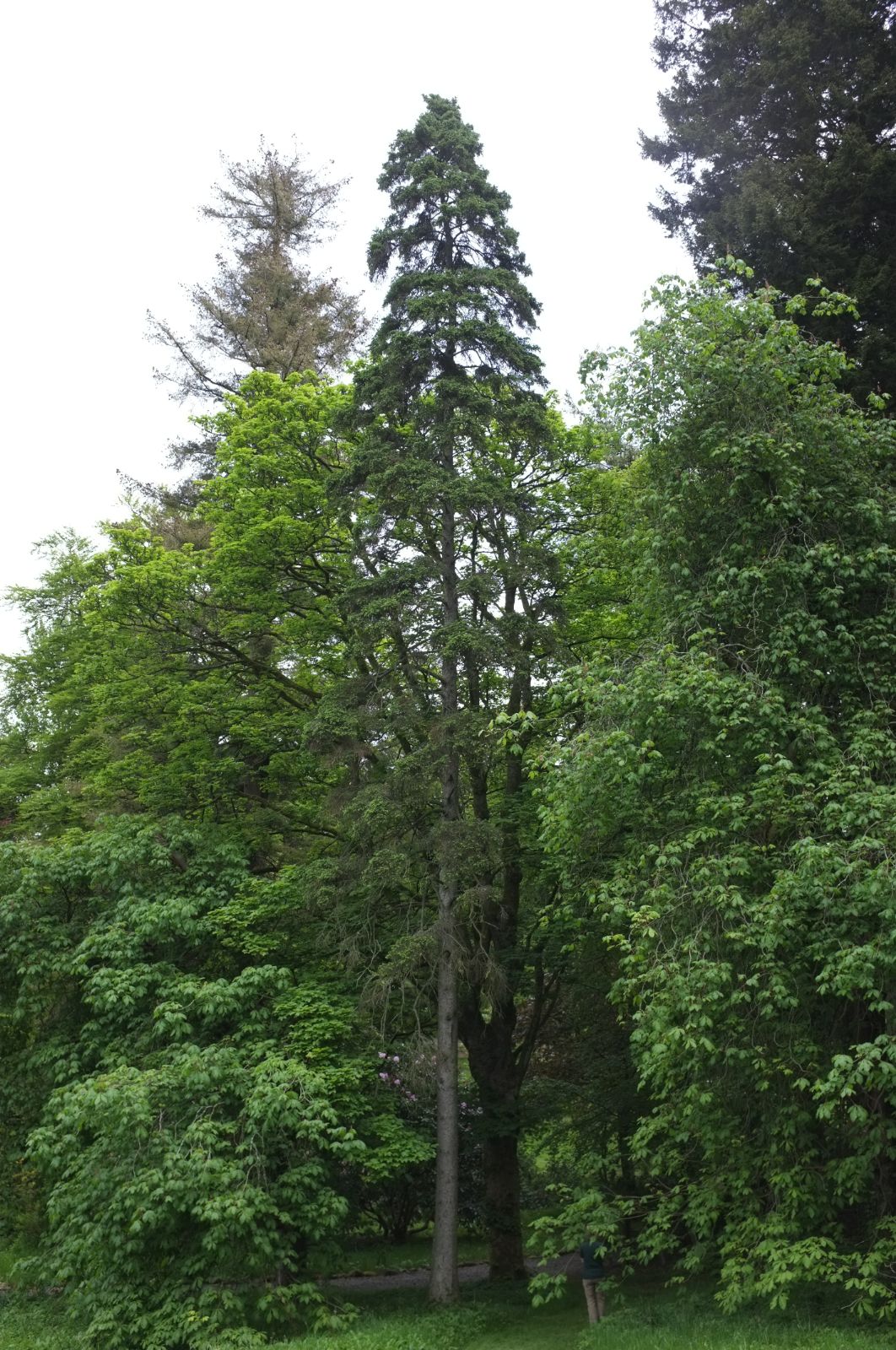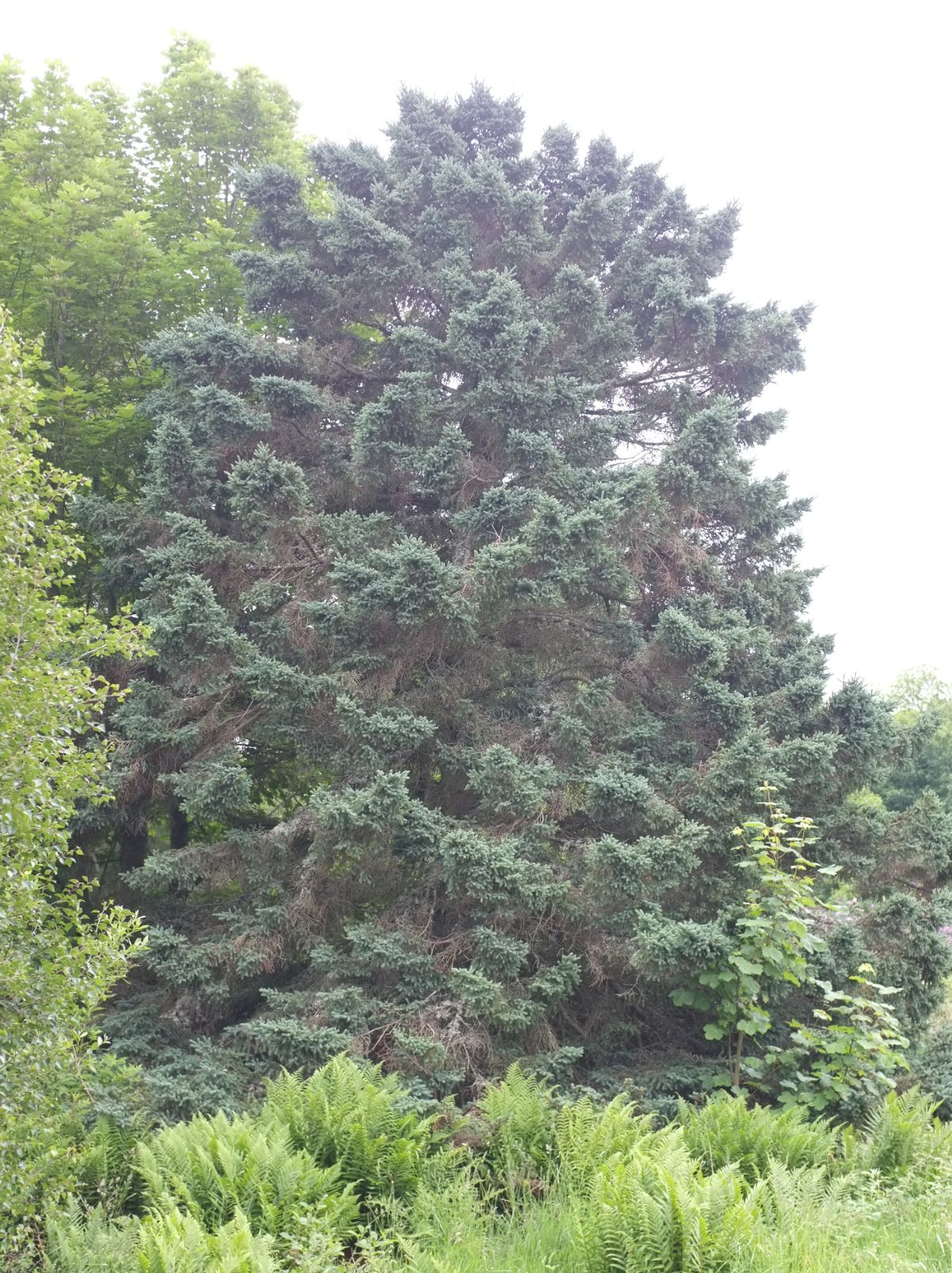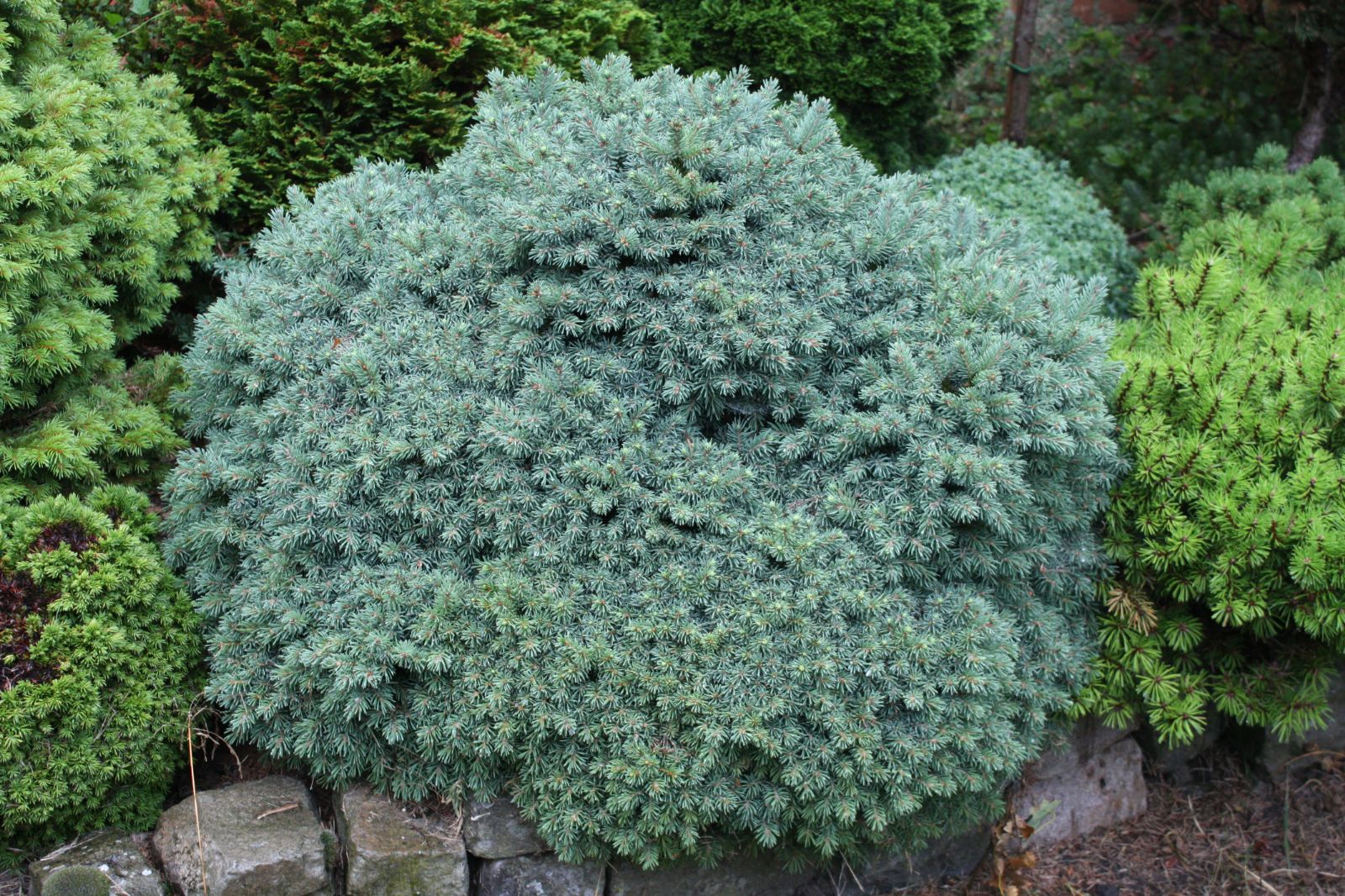Picea glauca
Sponsor
Kindly sponsored by
This genus has been sponsored and new text is being prepared.
Credits
Article from Bean's Trees and Shrubs Hardy in the British Isles
Recommended citation
'Picea glauca' from the website Trees and Shrubs Online (treesandshrubsonline.
Infraspecifics
Other taxa in genus
- Picea abies
- Picea alcoquiana
- Picea asperata
- Picea brachytyla
- Picea breweriana
- Picea chihuahuana
- Picea crassifolia
- Picea engelmannii
- Picea farreri
- Picea glehnii
- Picea jezoensis
- Picea koraiensis
- Picea koyamae
- Picea likiangensis
- Picea linzhiensis
- Picea × lutzii
- Picea mariana
- Picea martinezii
- Picea maximowiczii
- Picea meyeri
- Picea morrisonicola
- Picea obovata
- Picea omorika
- Picea orientalis
- Picea polita
- Picea pungens
- Picea retroflexa
- Picea rubens
- Picea schrenkiana
- Picea sitchensis
- Picea smithiana
- Picea spinulosa
- Picea wilsonii
A tree usually 60 to 70 ft high; young specimens with much the habit of the common spruce, but of a greyer green; branchlets very pale brown, not downy; buds with ciliate scales. Leaves mostly on the upper side of the branches; they are 1⁄2 to 3⁄4 in. long, pointed, but not prickly, four-angled, grey-green, with two to five lines of stomata on each face. Cones cylindrical, 11⁄2 to 2 in. long, pale shining brown when mature; scales very thin and flexible, broad and rounded, nearly entire at the margins.
Native of N. America; introduced about the end of the 17th century. It is very widely spread in the wild, reaching, according to Sargent, from Labrador to Alaska, extending southwards along the eastern side of the Rocky Mountains to Montana, and to New York, Michigan, etc. It reaches a higher latitude than any other evergreen tree, and nearly to the Arctic Sea, on ground which only thaws 3 or 4 ft down in summer. It possesses little merit as an ornamental tree in Britain, especially in the south, but on the vast ‘Danish heaths and dunes of Jutland which are continually swept by the gales of the North Sea it has been extensively planted, especially as a shelter tree. It serves this purpose so well that no other known tree could take its place there’ (Rafn). In the catty smell of its foliage it resembles P. engelmannii, but that species has longer leaves and more tapered cone-scales, and it, as well as the more nearly allied P. mariana and P. rubens, are further distinguished by their downy shoots.
The finest trees of P. glauca grow in the Rhinefield Drive in the New Forest. Planted in 1861, the best is 90 × 53⁄4 ft (1970). Other examples are: National Pinetum, Bedgebury, Kent, pl. 1929, 43 × 23⁄4 ft (1970); Speech House, Glos., pl. 1916, 64 × 31⁄4 ft (1968); Hergest Croft, Heref., pl. 1911, 60 × 31⁄2 ft (1969); Bicton, Devon, 54 × 4ft(1968); Eridge Castle, Kent, pl. 1880,69 × 8 ft (1971).
From the Supplement (Vol. V)
specimens: Eridge Castle, Kent, pl. 1880, 85 × 81⁄4 ft (1984); Little Hall, Kent, 57 × 41⁄4 ft (1984); Castle Milk, Dumfr., 75 × 51⁄4 ft and 69 × 41⁄2 ft (1984); Ardverikie, Inv., 75 × 51⁄4 ft (1982).
'Caerulea'
Of dense habit, with conspicuously glaucous leaves.'Conica'
This is one of the most distinct and pleasing of dwarf spruces. It makes a slender, cone-shaped bush, very closely and densely branched, resembling the old-fashioned candle extinguisher in shape. The young shoots are slightly downy, pale creamy yellow, the leaves bright green, very slender, {1/4} to {1/2} in. long, slenderly pointed, with one to three broken lines of stomata on each face (P. albertiana var. conica Bean; P. glauca var. albertiana f. conica Rehd.). Award of Merit 1933.This variety was found by Dr Alfred Rehder and J. G. Jack near Lake Laggan in Alberta in 1904, and distributed by the Arnold Arboretum. A plant was received at Kew in 1909 and in twenty years it got to be 6 ft high and made a perfect cone 3 ft wide at the base. It can be increased by late summer cuttings. The discoverers collected four plants, but presumably only one was propagated.
'Echiniformis'
A dwarf, slow-growing bush with glaucous foliage, forming a flat-topped hummock. Leaves stout, rigid, usually incurved, about {3/16} in. long.
var. albertiana (S. Brown) Sarg.
Synonyms
P. albertiana S. Brown





